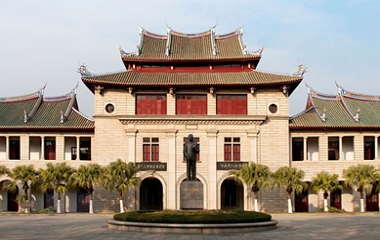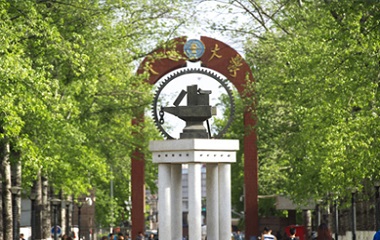Adegboyega Ayodeji Temitayo, a Nigerian doctoral student of Jiangxi University of Finance and Economics, contributes to the story.

From Dec 18 to 19, I and other international students in Nanchang, Jiangxi province, embarked on a 4-hour bus ride to a landmark of Chinese history that existed way before we were born.
It was an invitation for us to explore the exquisite yet ancient Chinese history and its significance in today's ultra-modern China landscape, to travel back in time to the revolutionary memories in Jiangxi. It can be described as a "spark that burst into flames".
The first time I truly discovered and understood a profound episode in Chinese history was with the GYLD program "China Tours."
As a filmmaker, I made a few documentaries that tell the story of modern-day China in my own way. But a story is richer and clearer as you hear and see it. It becomes more vivid and presents a chance of picking up things you might have missed in the first place.
So, even though I have heard the story of Jinggangshan, the legendary Long March of the Red Army, the chance to go back to that story and immerse in the reality of that moment was intriguing to me as a storyteller.
For this trip, our destination was Jinggangshan, a city located in the middle of the Luoxiao Mountains at the junction of Hunan and Jiangxi provinces. We set out from Nanchang very early in the morning and picked up other delegates from their set points, then we headed to Jingcai town. As always, I couldn't help but notice thick forests on both sides of the highway, which is a testament to China's commitment to climate change and sustainable development.
When we finally arrived at Jingcai town, we were treated to a presentation on how the town developed a sustainable means of improving its livelihood has and how it became an entrepreneurship hub. It was good to know that my university, Jiangxi University of Finance and Economics, was instrumental in helping this town achieve this success by becoming a strategic and accountability partner.
After lunch, we headed to the Beishan Martyrs Cemetery to pay our respects to the Martyrs of the Jingganshan Revolution. I have watched the live rendition of their march, but to be there in person at their resting site just took the experience in full circle. The serenity and calm of the environment was soothing and it was nice to see other people bring flowers and pay their respects to these heroes. .
We proceeded to the Sculpture Garden, the revolutionary monument and the former residence of Chairman Mao in Ciping. Being back in that room reminded me of how motivated and driven he must have been for the future of China. We proceeded to Jingganshan Museum to see monuments and still life recreations of these notable relics of Chinese history.
It was here where I heard for the first time the inspiring story of faith, commitment, loyalty and belief displayed by Wu Ruolan, wife of Zhu De, one of the major founders of the People's Republic of China. She was beheaded at a young age in pregnancy without giving up her husband. I couldn't help but imagine how terrified, helpless yet brave and resolute she must have been in the face of death and how angry and bitter Zhu was when he heard of the cruel demise and execution of his beloved. History is a window to the past and a good reminder that times have and will continue to change.
On the second day, we went to a small village called Shenshan at the foot of Jinggangshan Mountain. This place once again confirmed just how much commitment the Communist Party of China has pledged to the people.
The residents of Shenshan are predominantly farmers and craftsmen. They believe in hard work and making it for themselves rather than getting a handout. They had the insight to prioritize and knew exactly what they wanted and were united in the request. They also had confidence in the policy of the country.
Benefitting from the country's road infrastructure project, Shenshan was boosted by the National Rural Revitalization Project aimed at bolstering the local economy in the countryside.
The residents of Shenshan are lively, happy and vibrant people who met us with smiles, handshakes and a positive aura. They were proud of their food, merchandise and community. Through this trip, I saw the local history and story of this village, the foundation of what would eventually make China great under the leadership of the communist Party.
We rounded up the trip with a few group photos and got treated to a delicious lunch before heading back to Nanchang. I hope to tell Chinese stories to more people via my medium and to keep exploring China and its culture.










